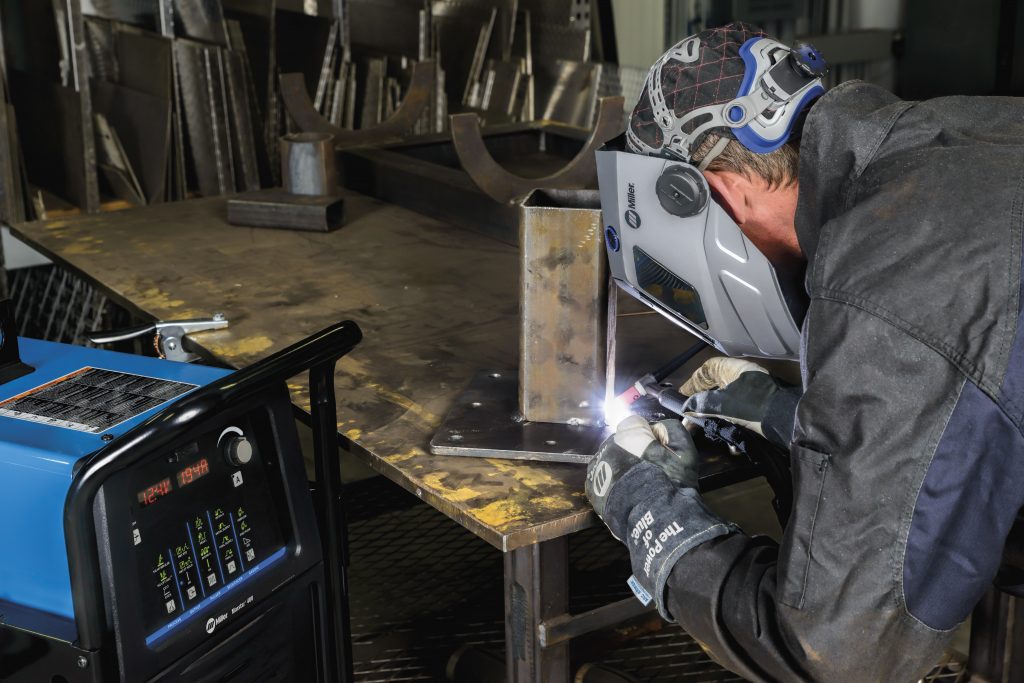As compared to a traditional TIG power source, a TIG inverter with advanced controls offers increased control over the welding arc. This allows the operator to tailor the bead profile, improve arc starting, increase travel speeds, perform better on thinner materials and thinner sections as well as experience other production benefits.
A traditional power source uses a transformer to turn high voltage, low amperage primary power into the low voltage, high amperage power used for welding. An inverter power source takes input power, filters it to DC, and, using fast solid-state switches, increases its frequency up to 20,000 to 100,000 Hz, and then transforms it into useable welding power with an advanced level of control over the arc.
With inverter technology comes the capability for high speed pulsing in DC mode. In AC mode, an inverter offers waveform shaping with more control for optimal results. We’ll take a look at some of the benefits behind these additional capabilities and how you can put them to use. We start this series with DC Pulsing.
DC Pulsing
Pulsing refers to switching from a peak amperage to a lower background amperage. This process is useful on ferrous metals whenever welding heat input must be minimized or penetration has to be accurately and repetitively controlled. For out-of-position welding, pulsing may prevent weld metal sagging or drop through. In addition, thin metals can be welded with less distortion.
“On thin stainless, a lot of times you use a pulse just as a way to strengthen the arc. Instead of having the tendency to want to spread out, pulsing focuses the arc,” says Bob Haye, Bob Haye’s Precision Welding, who specializes in welding needs for the aircraft and defense industries.
John Doe Tweet
High speed pulsing can also lead to faster travel speeds. When H.L. Lyons, a refrigerator door fabricator in Louisville, Ken., switched from conventional to inverter TIG technology, they cut welding time in half, reduced finishing time by a third and allowed each welder to finish almost twice as many products per shift.
Traditional technology usually allows for 1 to 10 PPS. A common range for an inverter is 100-500 PPS, which provides increased penetration, arc stability and travel speeds. More advanced inverter power sources, such as the Miller Dynasty, can pulse at 5,000 PPS, which further enhances stability, increases travel speed and is beneficial in automated applications.
Some inverter power sources allow the user to set the percentage of time spent at peak and background amperage to further control heat input and improve weld bead appearance. Increasing peak-on time increases puddle fluidity and helps to fine-tune penetration. A good starting point is to set peak time to 50-60 percent of each cycle. This can then be adjusted to suit your particular application.
A few inverters allow you to set the background amperage, which affects heat input into the part and helps determine the size of the weld puddle and arc, especially during the background portion of the pulse cycle at low PPS settings. At low pulse frequencies, the background amperage should be high enough to keep the puddle from solidifying; it should shrink in diameter but not solidify. For stainless and carbon steel, a good starting point is 20-30 percent of peak amperage.





